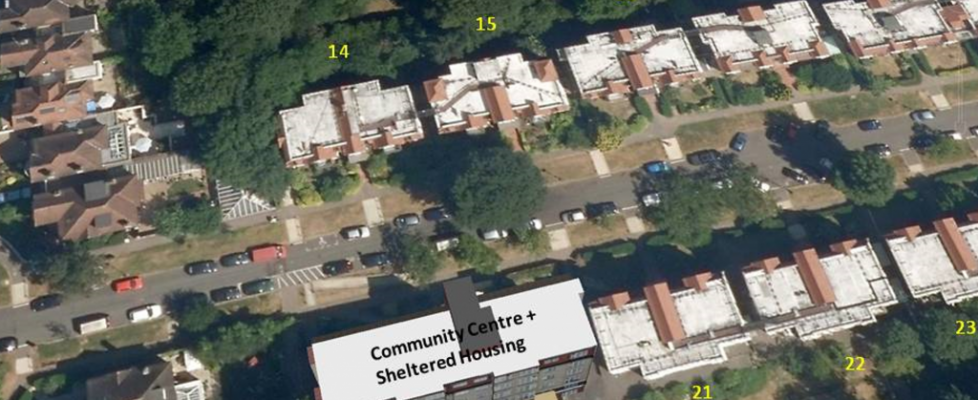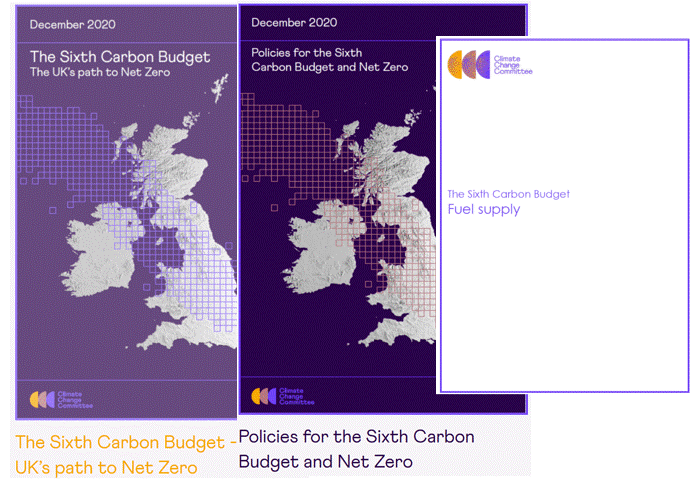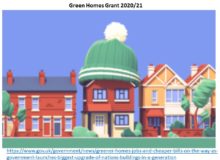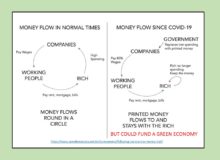The Sad Story of Solar at Holly Lodge
The Highgate Neighbourhood Forum (HNF) has set up ‘Community Action Groups’ to work on topics such as volunteering and to support cycling, and one group is called ‘Community Energy’.
The group met in July to see if there was scope to set up a community scheme in Highgate, and one site that looked very hopeful for installing Solar PV panels was Camden’s Holly Lodge estate. This consists of 32 Blocks with flat roofs, typically suitable for 4kWp of solar PV panels each and one block already has a small installation.
From a Global point of view we need to reduce the use of fossil fuel as the high carbon dioxide emissions are progressively causing Climate Change. From a UK point of view we have a commitment under the Climate Change Act to reduce emissions by at least 80% from 1990 levels by 2050. (p13). From Camden’s point of view it is committed to reducing carbon emissions for their estate and operations 27% by March 2017 and 40% by March 2020 compared with 2009/10. so Camden staff were happy to advise on this project. Although Holly Lodge looked like an ideal site, the group compiled a list of other possibilities in Camden and Haringey – where the owners were sympathetic and the roofs were suitable. Camden gave the group contacts who dispense grants to set up these schemes, and the group investigated approximate costs, benefits and income and the legal and tax aspects. A local Solar Panel company came to look at the scheme and confirmed that it was viable, and we also talked to Power Up North London (PUNL) as they had already set up the ‘Community Benefit Society’ that was eligible to arrange loans from investors.
Prior to the May elections, the government encouraged communities to raise funds to generate their own electricity, including grants to help set up such schemes and payments based on the power generated. Essentially these were to ‘subsidise’ the start-up costs for ‘clean’ power sources to replace old ‘dirty’ ones. In the case of new power from oil, gas and Nuclear (also a low carbon source at) £bns of subsidies come from tax payers, but in the case of Solar PV the (much lower) subsidies come from electricity customers – a distinction that the government uses to cut support for new Solar PV.
However, while we were doing all this preliminary work, the government was changing the rules, and reversing legislation that encouraged community schemes. See ‘Backward Steps since the Election’ for details of the changes, but suffice to say that it became difficult to put together a proposal offering a reasonable return for Highgate investors. On 27th Aug yet another change came, essentially removing Feed-In-Tariff returns for installation from Jan 2016.
As the Committee on Climate Change says (p10) “The global climate responds to cumulative emissions of carbon dioxide, meaning it is the total amount emitted over all years that drives climate change. Therefore, where there are low cost opportunities to reduce emissions, these should be taken, even in early years.” Essentially we need to reduce the carbon across our generation sources, and Solar emits only 54g/CO2 kWh (compared with 369 g/CO2 kWh from gas and 837 g/CO2 kWh from coal). . And we need to do it at an affordable cost, where Solar costs £80/MWh compared with £92.50/MWh, agreed for Hinkley Point Nuclear) . However the government has decided to support Nuclear and Gas rather than local renewable generation and to remove the business certainty recommended by the CCC for Solar, so the scheme was no longer viable.
The HNF renewable energy group tried hard to quickly go through all the new hoops, but alas it was not to be.





The Sad Story of Solar at Holly Lodge, Highgate, Camden | Going Green in Pooterland
November 10, 2015 @ 4:43 pm
[…] A local case story illustrating the negative effects of the government’s turn away from climate-saving renewable energy at the Holly Lodge Estate, Highgate, Camden. Transition Highgate have the story: https://transitionhighgate.stuff2say.com/2015/10/the-sad-story-of-solar-at-holly-lodge/ […]